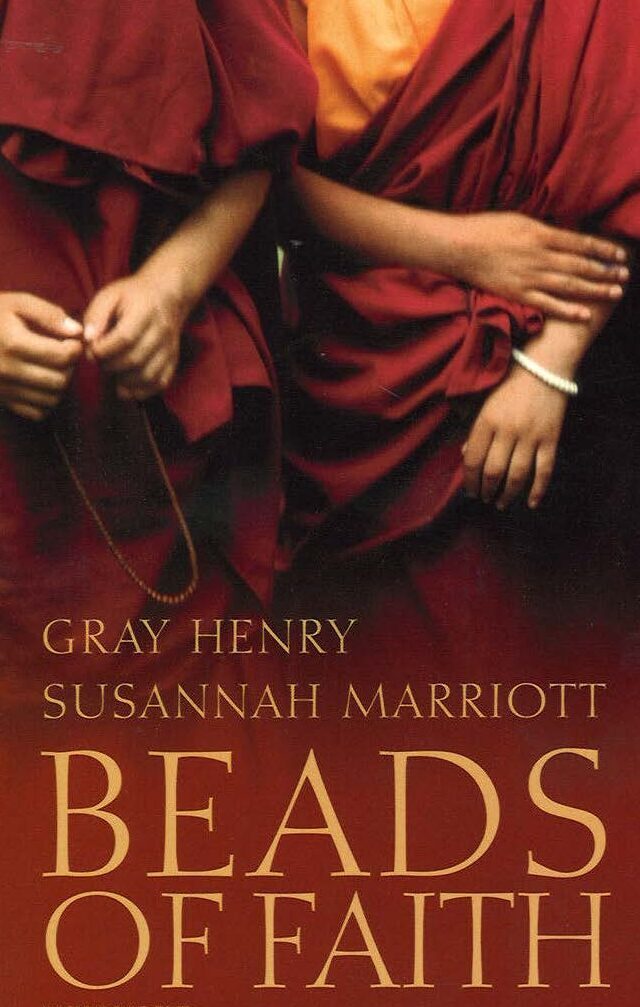“The Name pronounced even once is a benefit, whether one is aware of it or not. Prayer is not verbal, it is from the heart. To merge into the heart is prayer.” – Ramana Maharshi
Review by Samuel Bendeck Sotillos:
This new book Beads of Faith, which comes with a DVD of the documentary film, (See a clip in the video below) that was previously released under the same title, examines both the “outer and “inner” meanings of the use and function of prayer beads that have been instrumental in prayer, recitation, invocation and meditation found throughout all of the world religions. the DVD are filled with beautiful and contemplative imagery depicting the diverse ways that prayer beads are employed by spiritual practitioners of all traditions.
…
Prayer beads known as rosaries have been integral to the act of prayer within the Christian West or the Roman Catholic Church since the Middle Ages. Some possible origins of the Catholic rosary, from the Latin rosarium “rose garden”, date back to the 12th century during the Holy Crusades or in Moorish Spain and stem from Islamic uses of prayer beads. Another origin is thought to be connected to St. Dominic who received the Holy Rosary from the Blessed Virgin Mary affirmed by Pope Leo XIII. It was during the 16th century that rosaries took their current form which they are known today by. The rosary allows the practitioner to pray throughout the day no matter what activity is being engaged in, thus creating a divine precinct within the heart.
…
The rosary within the Christian East known as the Eastern Orthodox Church is a woolen rope of knots which is used to recite the Jesus Prayer or the Prayer of the Heart. Quintessential to the Prayer of the Heart is the command of St. Paul, “Pray without ceasing” (I Thessalonians 5:17). In the film one can observe a monk of Mount Athos performing this practice of the Prayer of the Heart.
…
The Jewish tradition uses prayer straps known as the tefillin, rather than prayer beads, which are worn on the head and the arm. The tefillin contain passages from the Torah that when worn on the forehead and the arm closest to the heart sublimate the desires of the heart, body and mind as mandated by King Solomon, “Bind them upon thy fingers, write them upon the table of thine heart” (Proverbs 7:3).
…
In Hinduism (sanātana dharma) prayer beads are known as malas, and are used to repeat a mantra or Divine names, which is a devotional practice known as japa mala. The DVD takes one into the presence of some of the great spiritual masters and sannyasin of India including the sounds of that world. Some of the exquisite footage in the DVD takes us on a visit to Burma—to Pagan a city of temples, to the great stupa of Shwedagon Pagoda in Rangoon and also invites the viewer to enter the world of a Burmese Buddhist master, among other sacred sites.
…
The Islamic tradition as well as Sufism, its mystical expression, refers to prayer beads as the tasbih, which is reaffirmed in the prophetic traditions, “Repeat the Tasbih a hundred times, and a thousand virtues shall be recorded by God for you, 10 virtuous deeds for each repetition.” (p. 90) In Sufism this process of remembrance or dhikr allows the seeker of truth to reside with God whenever and wherever God is remembered. A common recitation is: lā ilāha ill-Allāh, “There is no divinity but the Divinity.” illuminating the quintessential Sufi doctrine of the “Unity of Being” (wahdat al-wujūd). The DVD takes us into the world of remembrance (dhikr), sound and imagery of some of the great Sufi saints as well.
…
The uses of beads have a primordial origin for the indigenous peoples of the Americas. The Huichol Indians of Mexico, the Ojibwin of Canada and the Iroquois of North America (Turtle Island) utilize beads as a spiritual vocation, which is similar to the use of the rosary. Beading allows the artist to experience the “heartbeat of creation” while simultaneously participating in the craft or sacred art that connects the individual with the spiritual realm. The various forms of traditional prayer are described such as: the sweat lodge (Inipi), the vision quest (Hanblecheyapi) and praying with the sacred pipe (Chanupa).
…
The film concludes with a demonstration showing step by step how to make a rosary from rose petals by Brother Paul Quenon, a monk from the Abbey of Gethsemani in Trappist, Kentucky, who was a novice under Thomas Merton (1915-1968).
